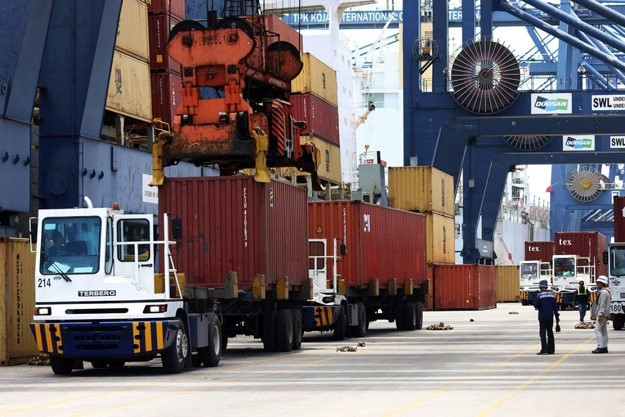Popular Reads
Top Results
Can't find what you're looking for?
View all search resultsPopular Reads
Top Results
Can't find what you're looking for?
View all search resultsFarmers get little from CPO tax cut
The government has decided to lower the export tax on crude palm oil (CPO) in November 2008 from 2
Change text size
Gift Premium Articles
to Anyone

The government has decided to lower the export tax on crude palm oil (CPO) in November 2008 from 2.5 percent to 0 percent. This decision was included in the 10 policies the government has put in place to mitigate the financial crisis affecting the country.
The government changed the minimum reference price CPO had to attain to incur the tax from US$550 per ton to $700 per ton. This means as long as the CPO reference price, or international price, stays below $700 per ton, the export tax tariff will remain at zero. The reference price for November is $646.84 per ton. This decision was made to increase CPO export levels in the coming months.
Many people involved in the industry cheered this new policy, believing that the 0 percent CPO export tax will increase farmers' income. But is it true?
Before answering this question, let's consider farmers' position in the palm oil industry. They supply the fresh fruit bunch (FFB) which is milled in refineries owned by state-owned (PTPN) or private plantations.
In 2005 small-scale farmers contributed 31 percent of the total palm oil produced in Indonesia. The largest contributor was private plantations at 52 percent and the smallest was state-owned plantations at 17 percent.
But, unlike the plantations, farmers sell only FFB whereas the other two players can choose to sell FFB, CPO or refined palm oil. This makes farmer uniquely vulnerable to FFB price changes.
In the global economy, all prices are related. The price of FFB and domestic CPO is influenced by the international price of CPO, not by the amount of export tax levied. When, for example, the CPO international price peaked in April 2008 the domestic CPO price peaked as well, even though the export tax tariff was up to 20 percent.
Examples like this demonstrate how any increase in the CPO international price will be transmitted to the CPO domestic price and then to the price of FFB in turn. The tandem price fluctuations are not perfectly parallel: A one percent increase in the international price does not mean the domestic CPO price would increase by one percent too, but by less than one percent. And the price of FFB, which affects farmers' revenue, would increase even less. Should prices decline, farmers would suffer the most because the price of FFB will fall proportionally further than the CPO domestic price.
From the farmer's viewpoint, the FFB price is determined not by market mechanisms but by the formula applied according to government decree which factors in the proportion index, prices and yields for both crude and refined palm oil. From this formula, we can infer the export tax is not included directly in the FFB price. It is accommodated instead in the CPO price.
Going back to the previous question, the 0 percent export tax will not benefit farmers much. The main factor that could prevent farmers from ensuring steady, decent income is price fluctuations. The government needs to consider imposing a policy to minimize price fluctuations of domestic CPO caused by changes in the international price.
In the long run, several changes have to be made to minimize the risk of CPO international price fluctuations which hurts farmer the most.
First, nowadays 70 percent of Indonesia's palm oil production is being exported, which makes palm oil producers heavily dependent on the international market and highly exposed to international market turbulence. In the future, domestic consumption of palm oil should be increased by expanding the current capacity through product diversification such as biofuel from palm oil.
Second, take advantage of the fact that refined palm oil fluctuates less than CPO in the international market. Indonesia exports 48 percent Crude, 52 percent refined. Compare this ratio with Malaysia's. Only 15 percent of its palm oil export is in the form of CPO. By exporting more refined palm oil, besides gaining a higher price, Indonesia can mitigate the effects of price fluctuations.
The writer is a doctoral student at the University of Tokyo, Japan, and lecturer in the Department of Agribusiness, Faculty of Economics and Management, Bogor Agricultural University.









